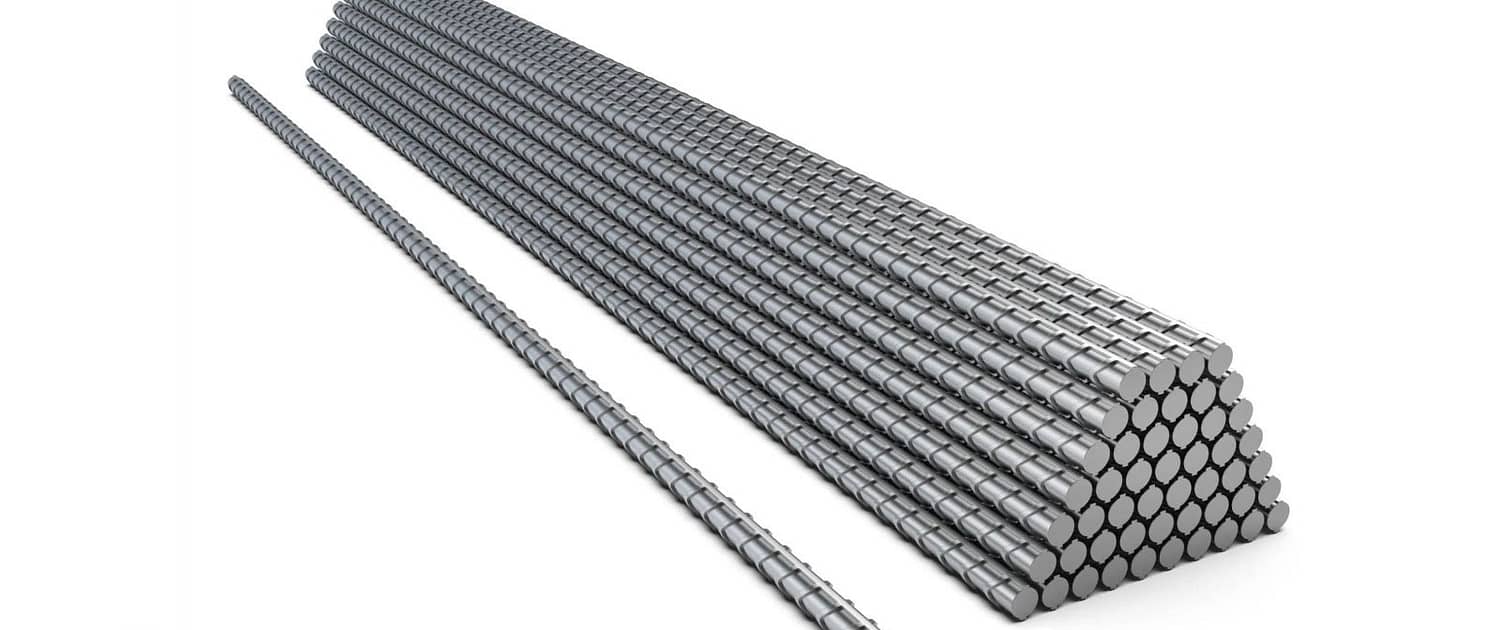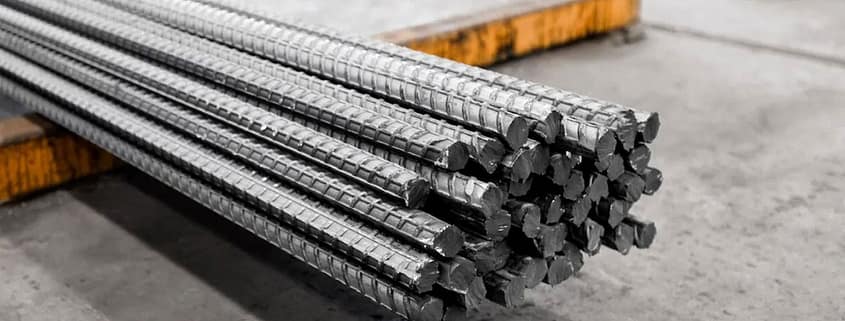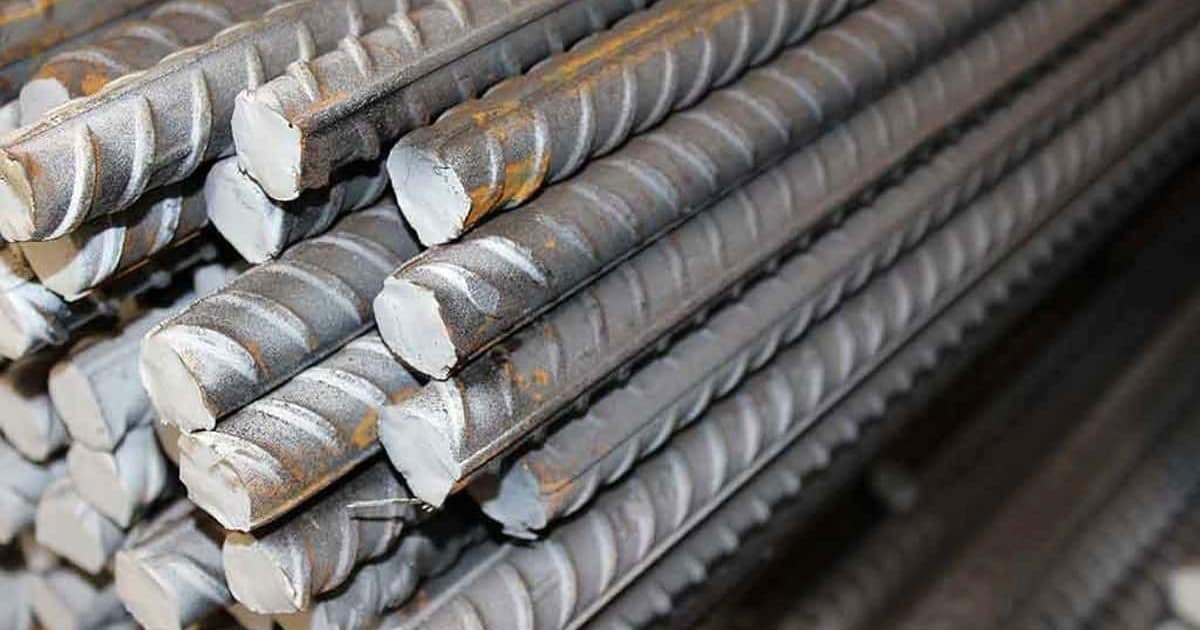rebar rods
A rebar is a sort of steel rod that comes in various diameters and is used to pour concrete. But why are rebars so crucial, and how do they keep us safe? To understand the role of rebar in concrete, we must first understand rebar.
The Crucial Role of Rebar Rods in Concrete Construction
Concrete is utilized for structural strength in the majority of man-made constructions. Everyone is familiar with concrete as one of the strongest materials with high resistance to compressive pressures; this substance is so strong that breaking it requires a great deal of power. Concrete has a significant vulnerability in addition to its tremendous strength! Tensile and rotational forces are less resistant to concrete. The rebar foot was utilized in construction because of its weakness. Of course, galvanized rebar is more expensive than epoxy-coated rebar rods.
The use of rebar in concrete makes your construction more tensile and force-resistant. In general, rebar is responsible for the reinforcement of concrete. There are several reasons why civil engineers attempt to raise a structure’s tensile strength. The most significant purpose for enhancing tensile strength is to protect the building from earthquakes; rebar in concrete will prevent cracks and fractures during an earthquake. The rebar rod functions as a structure’s defender and is accountable for the occupants’ care and safety.
Different Types of Rebar Rods for Sale
In continuing the main theme of this post, which is determining what rebar is, we shall investigate many models of this product. Rebar types can be classified according to their manufacturing procedures. They are classified into two types based on their appearance: branch rebar and coil rebar. They can, however, be classified into six European groups based on the material: full carbon steel, epoxy coating, galvanized, stainless steel, and polymer fiber reinforced material. The most frequent categorization of these items in Iran, however, is based on the Russian standard and is separated into four types: A1, A2, A3, and A4.

- A1 rebar
This variety, also known as simple or ductile rebar, has no treads or ridges on its surface. Type A1 is typically manufactured and offered in diameters ranging from 6 to 20 mm. On the other hand, it has the least amount of carbon, which results in exceptional flexibility, malleability, and weldability, making it an excellent choice for forging and welding.
- A2 rebar
These A2 steel beams have spiral treads that extend from the beginning to the end of each bar. These spindle-shaped treads make them stronger and more resistant than A1 treads. A2-type bars have a medium tensile strength and yield point, which is why they are known as semi-dry (crisp) and semi-warm. Because of their ductility, they are employed in columns, beams, shear walls, and transverse reinforcements.
- A3 rebar
Treads on the level of the bars are also seen in the A3 type, however these treads are cross-shaped. Their distinguishing trait, however, is not the form of ivory, but rather their greater degree of hardness and strength. This makes them less malleable and weldable than prior varieties, as well as more fragile. As a result, they are not permitted to be used in earthquake-prone locations or for welding.
- A4 Rebar
The last grade is A4, which features spindle-shaped transverse treads and the maximum hardness and carbon content. Because of its high strength, flexibility, and weldability, it is commonly used in construction and heavy projects.
Resistance characteristics of rebar types
Steel bars can be classified into six types:
- Carbon steel rebar
Carbon steel rebar can also be purchased as black bar rebars. This rebar falls into the category of the mildest rebar. Because these rebar rods are not resistant to moisture and corrosion, they should not be used in humid conditions.
- Epoxy rebar
Epoxy rebar is created when carbon steel is coated with epoxy on the rebar. This procedure boosts rust resistance by 70-1700 times. The epoxy coating on these rebar rods is thin, and if it is scratched or broken, the rust resistance will be compromised.
- Galvanized rebar
The next sort of rebar we’ll look at is galvanized rebar. These rebar rods are only 40 times as strong as carbon steel. The galvanized coating on these rebars is extremely resistant to damage, making them among the finest. This problem elevates galvanized rebar above epoxy rebar.
- GFRP rebar
Because GFRP composite rebars are extremely close to carbon fiber, you will not have bending issues while utilizing us. GFRP rebar is ideal for reinforcing concrete and has excellent anti-rust properties. This item is quite light in weight. Composite rebar rods are more expensive than epoxy rebars.
- Stainless steel rebar
Because of the bag, the price of stainless-steel rebar has increased. High quality is superior to other types of rebar rods on the market. These rebars are 1500 times stronger than black rebars and are regarded as the optimum reinforcement for the structure’s concrete. Another advantage of stainless-steel rebar is that it can be readily bent while in use.
- European rebar
The European rebar rod is a type of rebar made from manganese alloy. European rebars are not advised for usage in earthquake-prone locations or sites with a unified structure.
The Significance of Rebar in Construction
Many factors must be addressed and taken into account while determining the role of rebar in concrete. It is acceptable to claim that building with concrete without reinforcement and rebar is impossible since a person needs safety in his or her environment to live happily. In addition to enhancing strength, using rebar in concrete provides occupants beneath that building’s roof safely.
You can visit the Apexrod website to talk with our customer service to find out the price of various types of rebar rods for sale, including the daily price of rebar rods.



Leave a Reply
Want to join the discussion?Feel free to contribute!